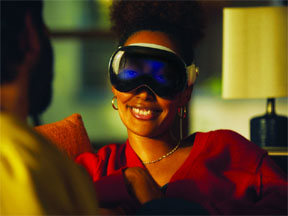
There is excitement and skepticism surrounding Apple Vision Pro, the tech giant’s first new product in over a decade. With the mixed-reality headset going on sale on February 2, Apple will be judged on how developers respond to the $3,500 device and whether those developers see potential in creating apps for the Vision Pro. The headset is launching at a crucial time when Cupertino is under pressure to look beyond the iPhone and open new avenues of growth. Critics are watching to see how Apple’s gamble with immersive experiences pays off.
But more than technology, it is user behaviour that will decide whether Apple’s Vision Pro is a success or not. History shows that tech companies have had trouble mainstreaming face computers on the lines of smartphones and PCs. Much of the problem lies in getting average people to get used to a headset that is bulky and looks weird when strapped onto their face.
The criticism is valid and Apple is no exception. The Vision Pro is marketed as a new type of “spatial computer” that is worn on your face. Instead of looking at the screen as you do on your smartphone, the output is beamed directly in front of your eyes using two high-resolution displays not too far from you. A device like the Vision Pro transforms your physical space into a giant screen floating in the air. Additionally, Apple ditches the traditional control mechanisms like a keyboard, mouse, or touchscreen, and instead tracks your eyes and hands for inputs.
The tech industry’s fascination with face computers dates back to the 1960s when American computer scientist Ivan Sutherland introduced the first head-mounted display with the help of his student Bob Sproull. That head-mounted virtual reality display system was so heavy that it had to be suspended from the ceiling. The device was primitive both in terms of graphics and realism, but it laid the foundation for Virtual Reality, VR as it is commonly known, where users interact in a three-dimensional space around them. The development of VR sped up in research labs since then, and the technology began to be heavily marketed through Hollywood movies.
By the 80s and 90s, companies like Sega and Nintendo started to launch dedicated VR gaming systems with a focus on 3D gaming, but none of the devices were able to bring virtual reality into mainstream conversations. The Sega VR, heavily promoted at the Consumer Electronics Show in 1993, had head tracking, stereo sound, and LCD screens in the visor. Sega intended to commercially release the headset at a price point of $200, but technical difficulties led to the project’s cancellation, and the wrap-around glasses remained a prototype and were never released. Source: The Indian Express




Be the first to comment